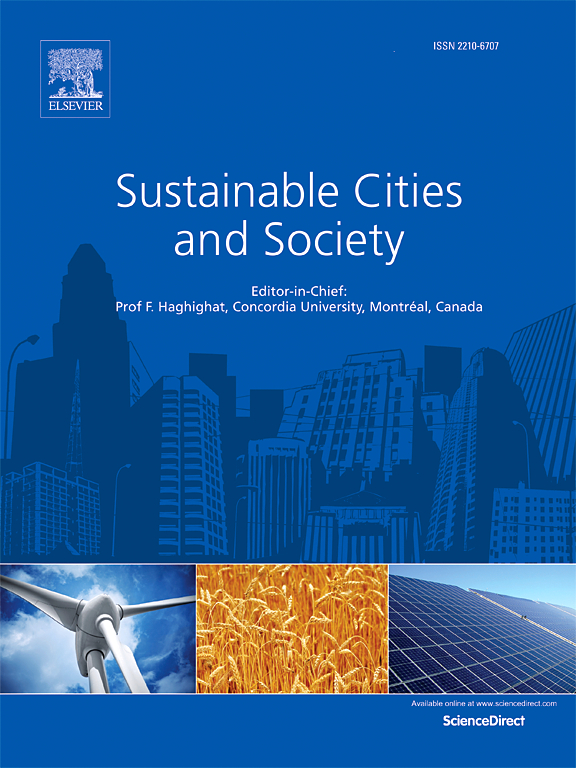A new perspective to assess urban heat islands by incorporating both canopy and boundary layer air temperature from the view of satellite remote sensing
IF 10.5
1区 工程技术
Q1 CONSTRUCTION & BUILDING TECHNOLOGY
引用次数: 0
Abstract
With rapid urbanization, the urban heat island (UHI) effect intensifies, but the urban boundary layer heat island (UHIUBL) remains a complex and underexplored phenomenon. This study proposes a novel method to reconstruct and downscale atmospheric temperature profile (DATP) products with 1 km spatial resolution, covering 79 layers from 2 m to 3000 m in Beijing from 2003 to 2019. We introduce the "vertical UHI intensity index (VUHII)," which uses height-weighted summation to evaluate UHI intensity, providing a detailed understanding of UHIUBL's spatiotemporal distribution. Results show that UHIUBL exhibits distinct seasonal and diurnal patterns compared to surface and canopy UHI. UHIUBL intensity is higher in downwind suburban areas with stronger daytime values, while city center nighttime intensity is weaker. The height at which UHI effect disappears varies seasonally between 200 m and 2100 m. UHIUBL shows a declining trend both day and night in the Plain, while in the city center, it increases at night. These findings demonstrate the effectiveness of our method and highlight the importance of understanding UHIUBL for urban sustainability, particularly in developing climate adaptation strategies and optimizing urban planning.
求助全文
约1分钟内获得全文
求助全文
来源期刊

Sustainable Cities and Society
Social Sciences-Geography, Planning and Development
CiteScore
22.00
自引率
13.70%
发文量
810
审稿时长
27 days
期刊介绍:
Sustainable Cities and Society (SCS) is an international journal that focuses on fundamental and applied research to promote environmentally sustainable and socially resilient cities. The journal welcomes cross-cutting, multi-disciplinary research in various areas, including:
1. Smart cities and resilient environments;
2. Alternative/clean energy sources, energy distribution, distributed energy generation, and energy demand reduction/management;
3. Monitoring and improving air quality in built environment and cities (e.g., healthy built environment and air quality management);
4. Energy efficient, low/zero carbon, and green buildings/communities;
5. Climate change mitigation and adaptation in urban environments;
6. Green infrastructure and BMPs;
7. Environmental Footprint accounting and management;
8. Urban agriculture and forestry;
9. ICT, smart grid and intelligent infrastructure;
10. Urban design/planning, regulations, legislation, certification, economics, and policy;
11. Social aspects, impacts and resiliency of cities;
12. Behavior monitoring, analysis and change within urban communities;
13. Health monitoring and improvement;
14. Nexus issues related to sustainable cities and societies;
15. Smart city governance;
16. Decision Support Systems for trade-off and uncertainty analysis for improved management of cities and society;
17. Big data, machine learning, and artificial intelligence applications and case studies;
18. Critical infrastructure protection, including security, privacy, forensics, and reliability issues of cyber-physical systems.
19. Water footprint reduction and urban water distribution, harvesting, treatment, reuse and management;
20. Waste reduction and recycling;
21. Wastewater collection, treatment and recycling;
22. Smart, clean and healthy transportation systems and infrastructure;
 求助内容:
求助内容: 应助结果提醒方式:
应助结果提醒方式:


